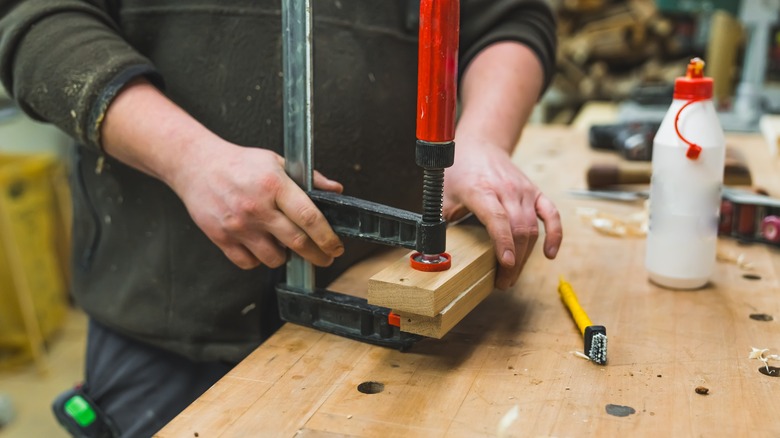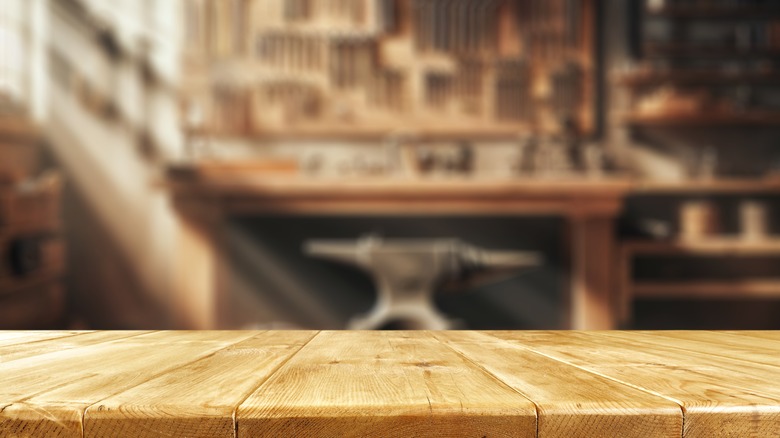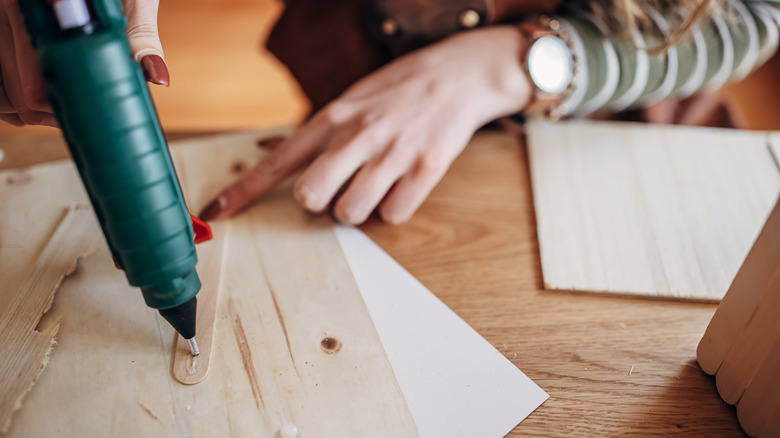How Long Wood Glue Typically Takes To Dry (& Tips To Speed Up The Process)
If you're a DIYer, you know that dealing with wood glue is a near-certainty on almost any woodworking project. And unlike mechanical fasteners, glue affords impenetrable bonds that often make the two joined members stronger than they were on their own. Unfortunately — also unlike screws — glue takes a while to set. Knowing how long the glue will take to cure can help you avoid delays in your project. And if you understand the conditions that affect drying times, you may even be able to get that joint ready faster. So, how long does wood glue take to dry? The answer depends on the type of glue you're using and the conditions in the work area.
For example, hide glue doesn't take much time — expect it to dry in under two hours. Likewise, Polyvinyl Acetate (PVA) glue typically dries in under an hour, although you may want to wait a day to get a particularly strong bond. Meanwhile, polyurethane-based glue is the sloth of wood glues, with a typical drying time of up to 24 hours. All of these are average setting durations, and they can vary greatly depending on the workshop conditions. Below, you'll learn which environmental factors influence wood glue drying times, and things you can do to speed up the setting process.
Factors that determine how long wood glue takes to dry
Apart from the type of glue, several conditions affect how long wood glue takes to dry after application. Temperature and humidity play a major role in glue setting times. In most cases, the warmer the air inside the space where you're gluing the wooden components together, the faster the glue will cure. However, heat often comes with humidity, and the latter can actually decelerate the curing process because the glue's water content takes more time to evaporate in a muggy environment. You'll wait longer for the glue to dry if the air is cool, too, as low temperatures also impede evaporation.
The nature of the materials you're gluing has an impact on how long the glue takes to set. The more porous a surface is, the more moisture it absorbs from the glue, so the more time this moisture needs to evaporate. Wood is inherently porous (unless it's varnished), although porosity varies between species — for instance, hardwoods generally have fewer pores than softwoods. How much of the adhesive you apply matters, too. The more glue you place between two surfaces, the longer the drying process will be. That's because there's a greater amount of water (or solvents) that must evaporate for curing to complete.
Tips for making wood glue dry faster
Unless you have a perfectly designed home workshop, you'll have limited control over the factors above. That said, a few tricks can help you slash the times in which it takes wood glue to dry on your project. For one, you can help the glue's water content evaporate faster by ensuring good circulation in your work area. If you don't have designated ventilation systems in the workshop, opening windows is an easy way to move air around the space and expel moisture. A simple fan can help you in your quest to banish moisture, especially if it has a heating function. If you can't achieve the right environmental conditions in the workshop, you can get the glued pieces to bond faster by blowing on them with a hair dryer. Doing so raises the air temperature next to the bond and helps eliminate moisture.
Likewise, don't use more of the adhesive than you need. Read the product label and apply only as much glue as necessary to reduce the solvent evaporation times. Also, make sure that the glue isn't coming out too thick when you squeeze it from the bottle. To get just the right amount of the adhesive onto the surface, consider using a wood glue precision applicator like this one sold at The Home Depot. Finally, remember that patience is a virtue in woodworking. If you are impatient and keep unclamping the bonded pieces to check, they'll take longer to stick — or fail to bond altogether.


